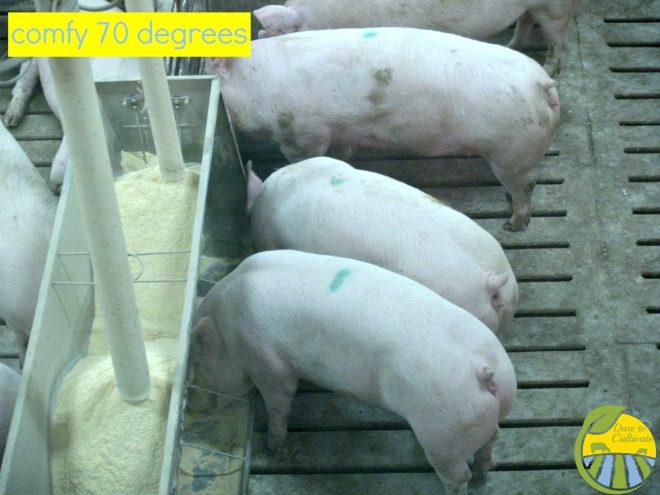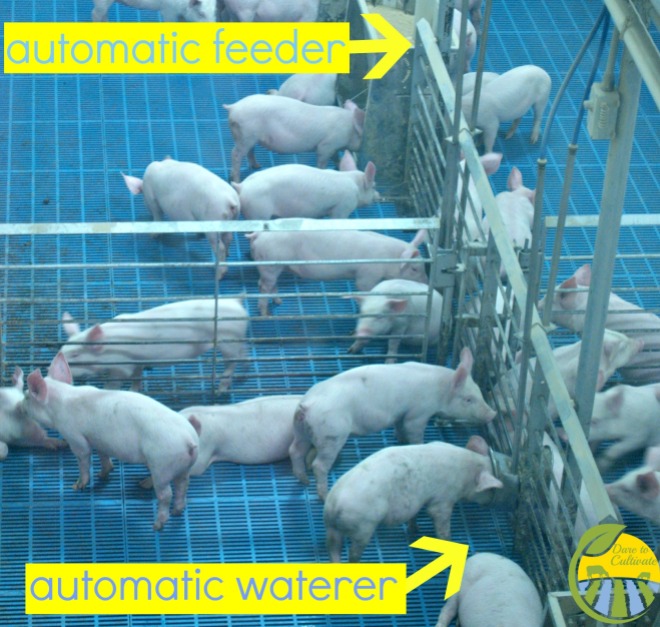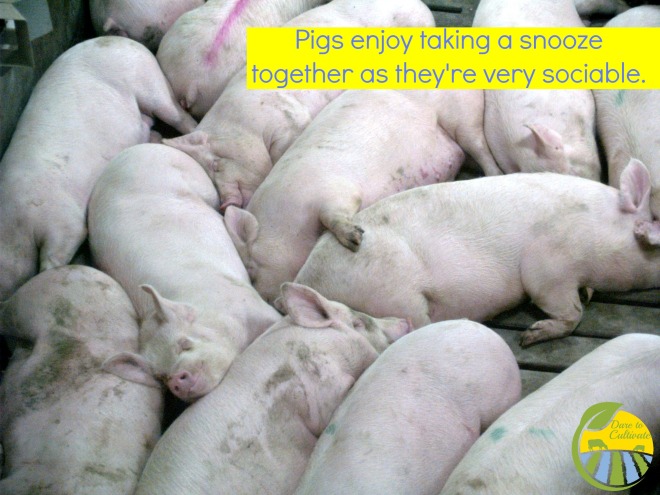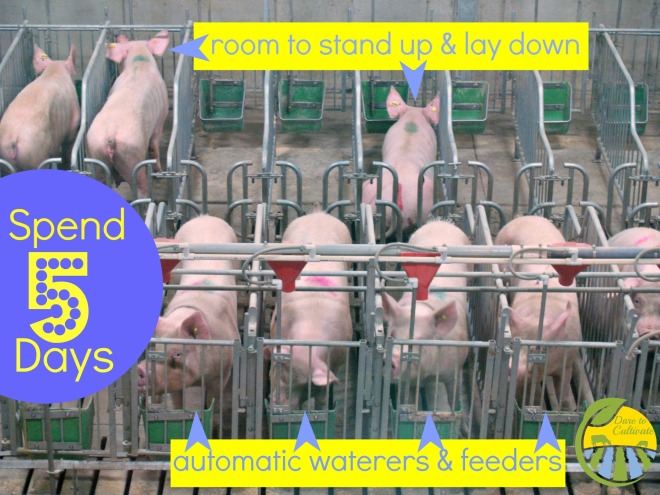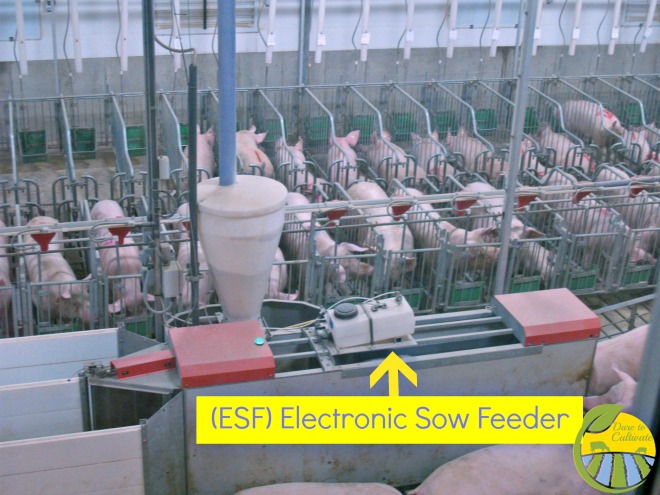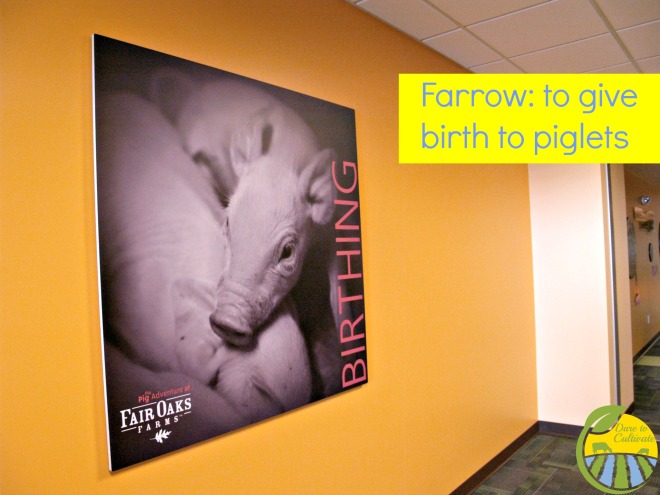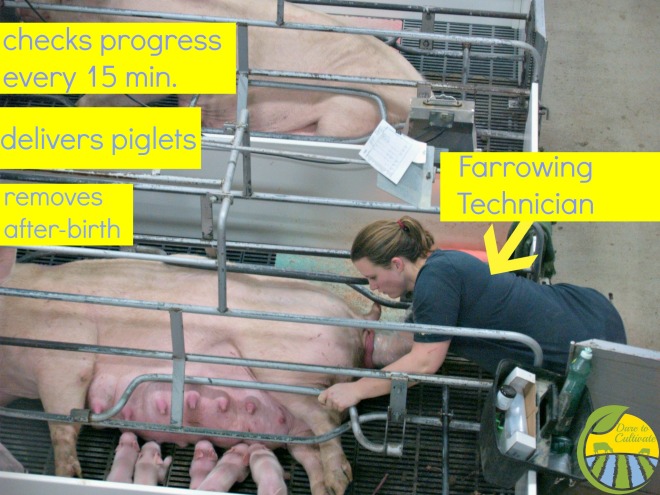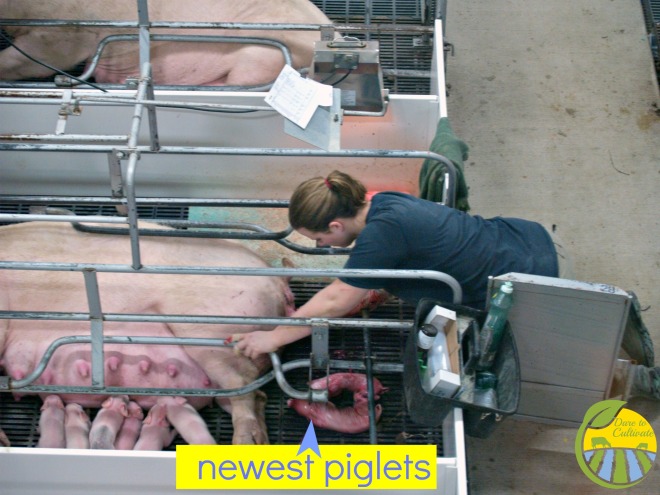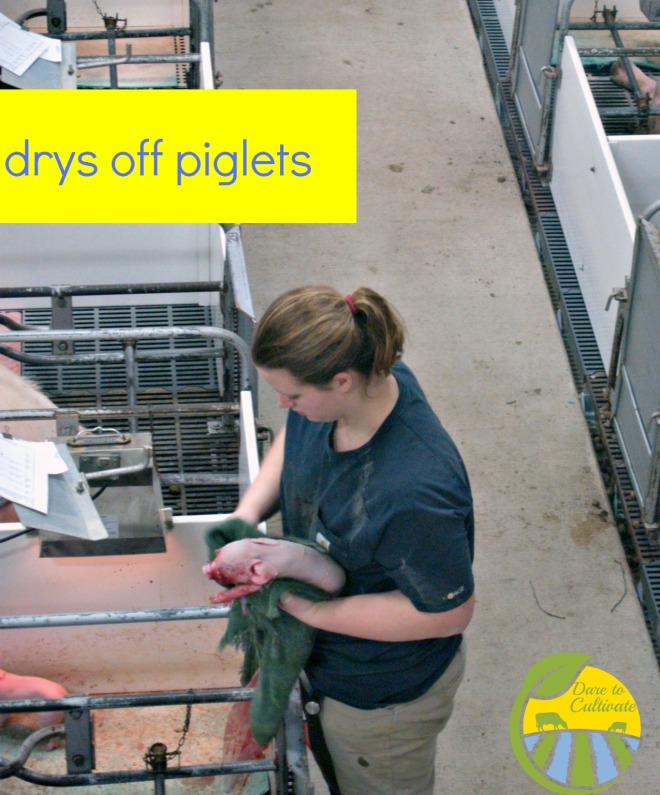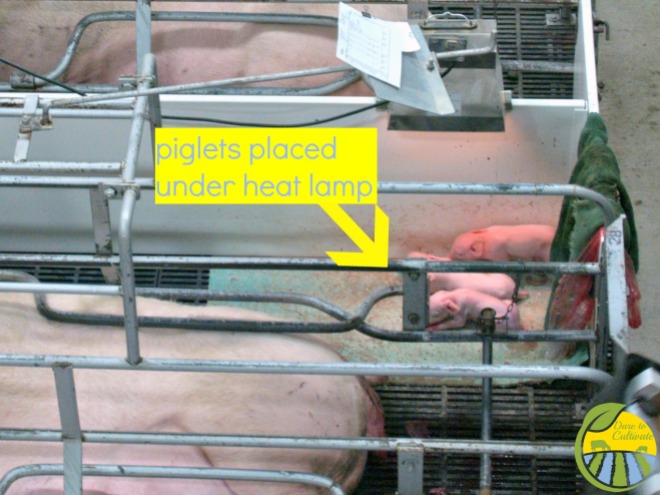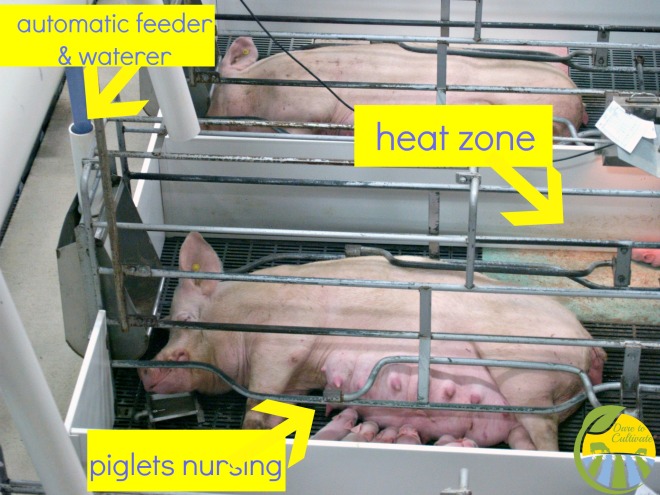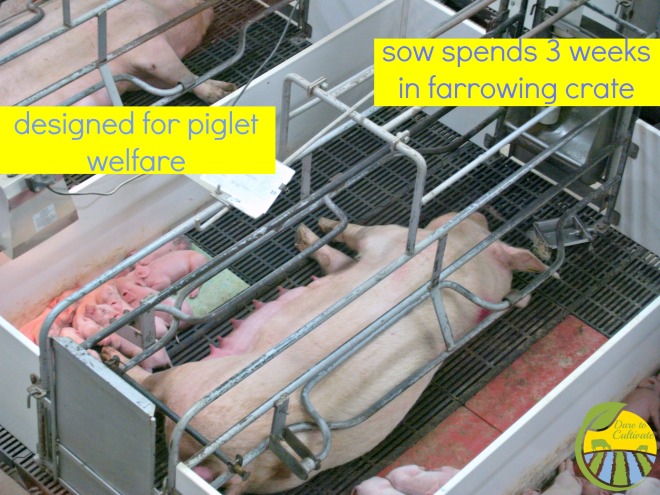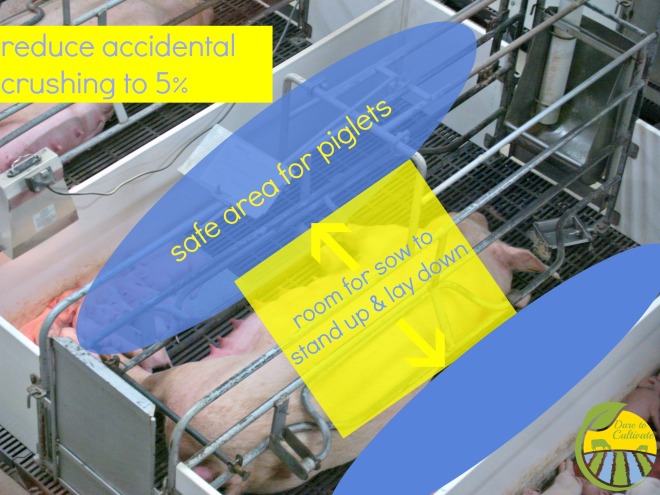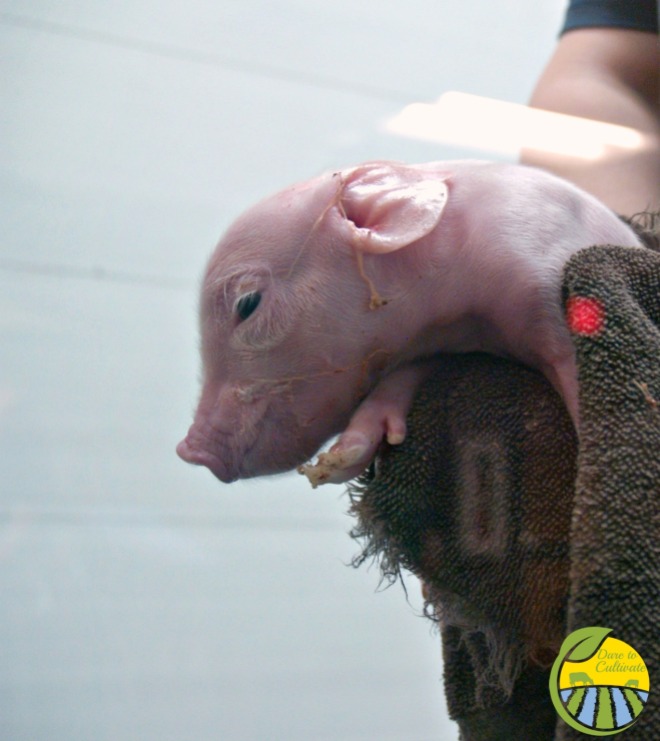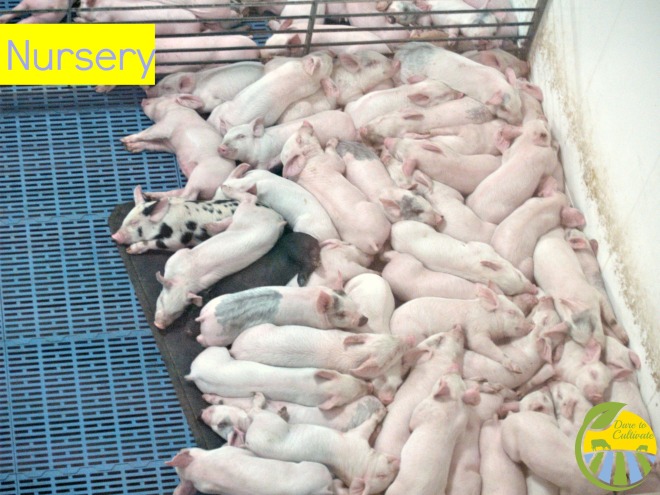
This Little Piggy – my intro to #realpigfarming
So – when I toured Fair Oaks Dairy Adventure that was only the first half of the day! We spent the second half of the day with pigs – and it was awesome! It’s pretty taboo for anyone who doesn’t work on a pig farm to be able to experience it in commercial hog farms because pigs are so susceptible to biosecurity issues (meaning they can get very sick!) I had never been to a modern pig operation before then (I’d been to a much, much smaller pig farm). I can tell you that the care these animals get is exemplary and that this is not uncommon throughout the swine industry.
We started by touring an education center. It was very interactive and informative about how far hog farming has come and why swine operations are designed in a particular way.
Then we took a “shower”. Like I said before – to keep pigs healthy it’s important to limit the germs they come in contact with. Most pig operations are “shower-in, shower-out” meaning employees shower before entering and leaving the facility.
By the way it was a hypothetical shower just to make that clear. The first place we had the opportunity to tour was the Gilt Development Unit. This is where gilts (pigs who have not given birth (farrowed) and are rather immature are fed a diet to help them grow.
It may be very surprising that pigs are raised indoors. In fact my father found it very surprising. But there are many different reasons why swine prefer the inside. One of them is climate control! Pigs can’t sweat which means they need to be in a cool place to perform well and stay healthy. This also protects them from the elements. With all the snow the Midwest has been getting as of late this has helped pigs stay comfortable and happy!
In these situations farmers can also more closely monitor how much they’re eating. Notice the access to clean water and all ample food? These guys are in paradise!
Also notice the slatted floors:) This makes the facilities easier to clean – they are cleaned daily. Contrary to public opinion prefer to be clean so this also makes them feel like they’re staying at the Hilton. (They would only roll in the mud in outdoor situations to cool off!)
 They’re like puppies all snuggling together! What goobers.
They’re like puppies all snuggling together! What goobers.
Next we headed to the gestation and breeding area! This is where pigs become pregnant enjoy their maternity leave.
Hogs are artificially inseminated. This just means that they don’t have to do any of the work! These are gestation stalls and they spend five days here to confirm that they are pregnant. They have plenty of room to stand up and lay down and access to all the feed and water they want!
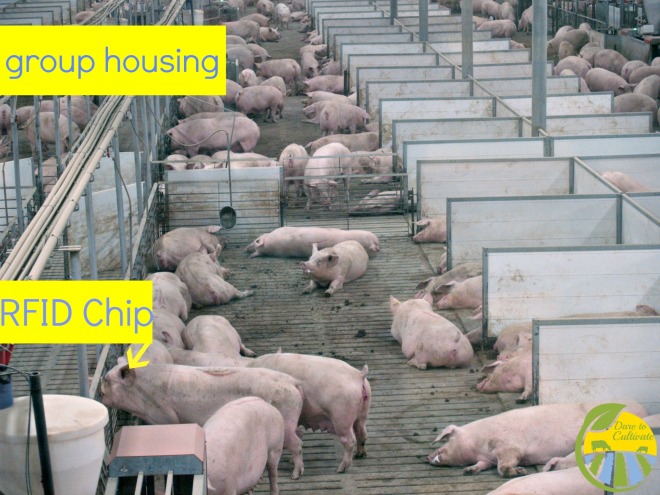 Soon after they’re introduced into group housing once again for the period of their gestation (pregancy) which is 3 mo’s, 3 week’s, 3 days. All hogs have an RFID chip that allows them to use the ESF feeding system.
Soon after they’re introduced into group housing once again for the period of their gestation (pregancy) which is 3 mo’s, 3 week’s, 3 days. All hogs have an RFID chip that allows them to use the ESF feeding system.
ESF stands for (Electronic Sow Feeder) and this is where pigs that are pregnant come to eat! They eat twice a daily. The RFID chip allows only one pig to enter at a time. Not only does this eliminate waste of feed but it also minimizes aggression by only allowing one hog access to feed at a time. There are several that dot their group housing and they really seem to love it. Never thought pig farming was so high tech huh?
We then headed to the farrowing barn.
We got to watch a farrowing technician deliver several piglets.
The technician checks her progress every 15 minutes to remove piglets and afterbirth.
She then dries the piglets off and sets them underneath the heat lamp or helps them suckle.
I want to talk a little bit about why the sows (mama’s) are housed in farrowing crates. It’s only for a little over three weeks (long enough to wean the piglets) in this facility. Sows have a tendency to accidentally sit on piglets and they are so tiny it can crush them. By using farrowing crates fatalities due to crushing are less than five percent. This is designed for the welfare of the piglets allowing them to escape potential crush injuries much easier.
Of course they have access to automatic feed and clean water. There are also ‘hot’ and ‘cool’ zones to encourage piglets to be in areas where they won’t be crushed. As I mentioned before pigs are very temperature sensitive. A ‘cool’ zone is provided for the sow to keep her comfortable and a ‘hot’ zone (usually through heated flooring and/or a heat lamp) is available to the piglets.
The piglets are processed soon after they are born. This includes a shot of iron (since they are not outdoors and not yet on feed which is formulated to contain iron), clipping eye teeth (done to lessen facial lesions and give the sow’s teats a break), docking tails (as some piglets will become aggressive and bite tails causing potential infection) and castrating for the males.
We also had the opportunity to meet a newborn! Only ten minutes old and of course through glass to keep the piglet safe and healthy.
At three weeks old they are placed in a nursery and eventually when they have become mature enough are integrated into the gilt development unit (growing pigs) I introduced in the beginning:) Like I mentioned they have plenty of room to roam around they just choose to sleep together.
After the tour we also got to eat at the delicious Farm House restaurant!
So that’s it:)! Thankyou so much for reading. If you have any questions I would absolutely love to answer them:)
-Lauren











